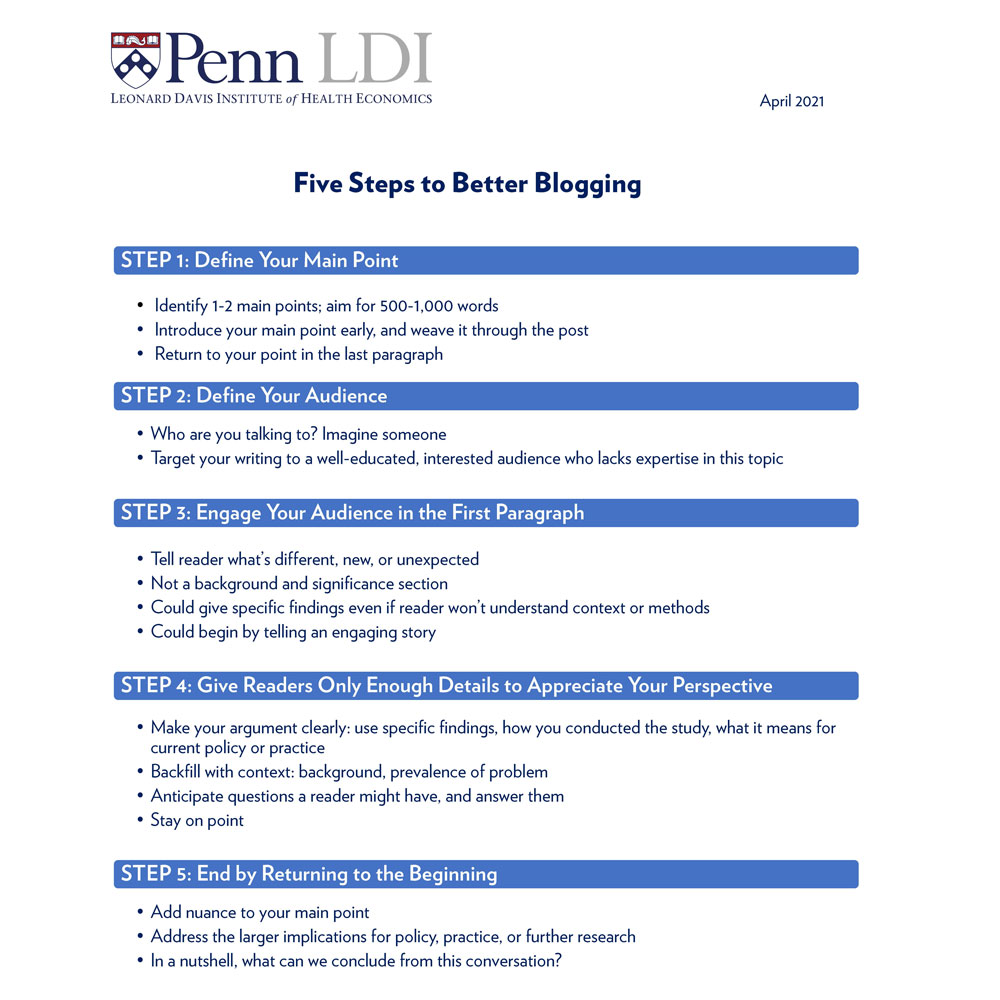Blog Post
Let’s Talk About Academic Blogging
A Meta-Guide
The best blogs are like good conversations. They’re engaging, enlightening, and easy to understand. As an academic blogger, your job is to get and keep your reader’s interest. Once you have that, you can give your perspective on something—a study, a news item, or a policy—and increase the chances that your work can have an impact beyond the academic sphere.
The first step is to define the main point of your post. Most good blogs, like a short conversation you might strike up with a friendly neighbor, have just one or two main points. You should introduce your main point early, weave it through the post, and likely return to it at the end. Try not to overstay your welcome: the best blogs are between 500 and 1,000 words.
As you prepare to write, imagine your audience. How much do they already know about your topic? What is their background and education? You’re looking for that sweet spot, where you’re not boring your audience with information they already have, and not losing your audience because they can’t follow your train of thought. I often imagine a state legislative aide—college-educated, policy-savvy, but not necessarily a health policy expert—and calibrate my conversation accordingly.
So now you’re ready to start. Your audience will decide, based on your first sentence or two, whether to stay with you, or move along to something more interesting or pressing. You should begin by giving them a reason to stay. Why should they care, and care now, about this topic?
The beginning is no place for a background and significance section, or a statement of what’s missing from the literature, or a statistic about the prevalence of the general problem. Right up front, draw your audience in with what’s new or different about your post. Instead of starting with, “More than 50,000 people died of a drug overdose this year,” your opening gambit can be, “By linking substance users to treatment, syringe exchange programs do more than substitute clean needles for dirty ones—they can save lives.” Or you can begin by telling a compelling story.
Once you have your reader’s attention, you can explain your findings in subsequent paragraphs, providing them with context and details. Because this is a short conversation, these details should all serve your main point. Challenge yourself to stay on point: you don’t necessarily need to persuade your audience, but you do need to give them enough information to understand and appreciate your perspective.
The rest of the post can fill in details that your audience may not already know: the specifics of a study, the context of the problem, and the larger implications. It’s helpful to imagine you’re having a dialogue, not giving a lecture; try to anticipate the questions that might arise, and then answer them.
So you’re ready to end the conversation. But how? You might try ending where you began, having now explained your point. You could add nuance, or bring up implications for policy, practice, or research. This is not the place to describe the limitations of your study, or the universe of things that are not known. Instead of ending with, “Future research should investigate best practices to link clients to treatment in syringe exchange programs,” you could conclude by saying, “We know that we can save lives through these programs. What we need is the public and political will to do it.”
Now it’s your turn. Start the conversation.
Also, see our 5-step Guide to Better Blogging here.
